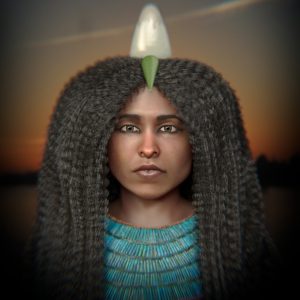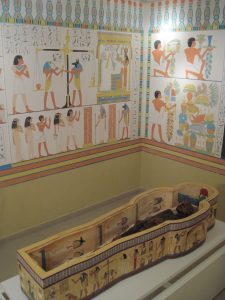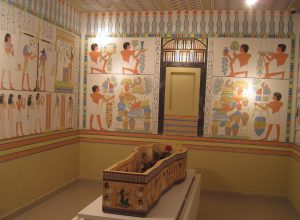São Paulo – The Rosicrucian Egyptian Museum in Curitiba, Paraná, is presenting this Tuesday (2) a new “facial approximation” of mummy Tothmea, from its own collection. The first digital recreation of this female mummy was done six years ago. Now, it has been updated using the latest technologies.
“The technology has developed quite a lot since then,” said archaeologist Moacir Elias dos Santos, who’s in charge of the Tothmea+6 project alongside 3D designer Cicero Moraes, who took care of digital modeling.
Just like in the earlier version, the new facial approximation was based on a CAT scan and photogrammetry – the measuring of an object’s size through photographs. The mummy (pictured) had already undergone actual reconstruction of its face, which was badly damaged.
According to Santos, the new simulation relied on a “chart of craniometric points” based on the current Egyptian population. “The previous one, which was used [in the original image], had been based on the measurements of Sub-Saharan women,” the researcher explained.
This new recreation is a more detailed depiction of Tothmea, with finer lines, darker skin and features that didn’t appear in the original, such as the protruding teeth. The adornments are an artistic rendering based on the iconography from the time the mummified person lived in, about 2,700 years ago, in the late Dynasty period.
(Story continues after photo gallery)
The mummy’s age, according to Santos, was calculated based on the style of mummification that was used, since there was scarce material to help with identification – like jewelry, personal effects and hieroglyphs. Even the sarcophagus went missing since the relic was moved from Egypt, in the late 19th century.
According to the archaeologist, however, records from 1888 relate that as per inscriptions on the sarcophagus, the mummified woman used to serve the goddess Isis, perhaps as a singer or musician. Her name is unknown. “Tothmea” is a nickname bestowed in the late 19th in honor of the 18th Dynasty’s Thutmose pharaohs (1504-1425 BC).
Santos adds that the mummy left Egypt in 1886 as a gift to a United States secretary of government. In 1995, it was donated to the museum in Curitiba, Brazil by the Rosicrucian Egyptian Museum in San Jose, California. “Sadly, this is now the only complete [Egyptian] mummy in Brazil, after the [Rio de Janeiro] National Museum fire [in September 2018],” said the archaeologist.
At the Curitiba museum, the mummy is on show in a room decorated like an 18th Dynasty Ancient Egyptian funeral chapel. As of this Tuesday, the new facial approximation will be on showcase in a big screen within the exhibition facilities. In the morning, Santos and Moraes will be at the museum to give explanations to visiting students.
The Museum’s cultural supervisor Vivian Tedardi said the collection also includes a collection of replicas of Egyptian artifacts from various museums around the world, as well as an Andean mummy pending studies to determine its date and other information.
Quick facts
Presentation of the Tothmea+6 Forensic Facial Approximation Project
Tuesday, April 2, 9am-4pm
Museu Egípcio e Rosacruz de Curitiba
Rua Nicarágua, 2620, Bacacheri, Curitiba, PR
Tickets: BRL 10.00 (full) and BRL 5.00 (half-price)
Find out more: +55 41 3351-3024
Translated by Gabriel Pomerancblum








